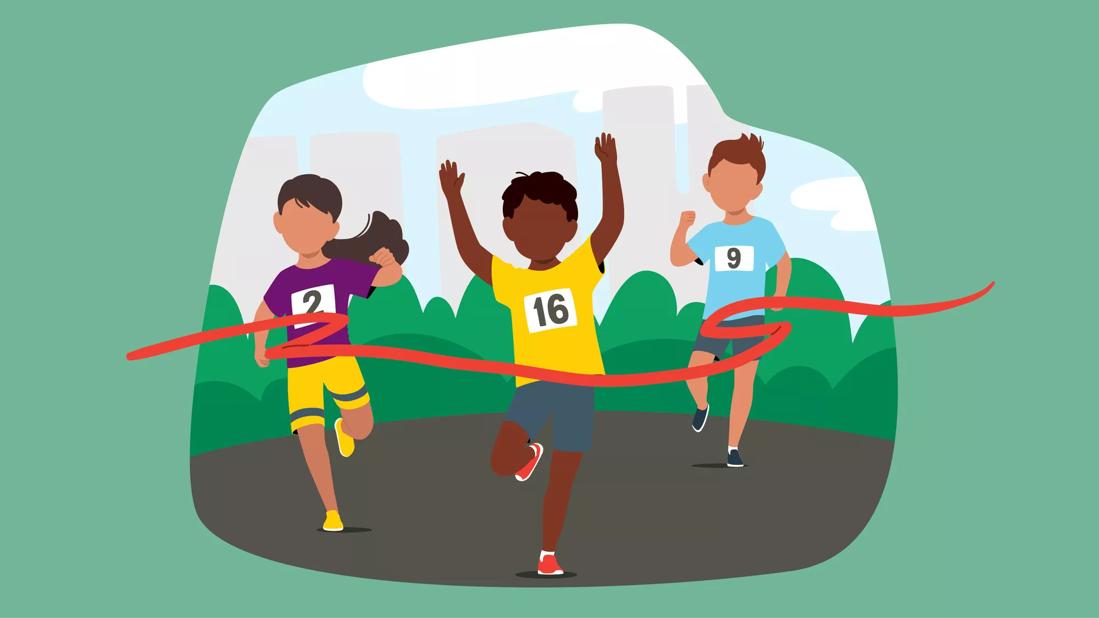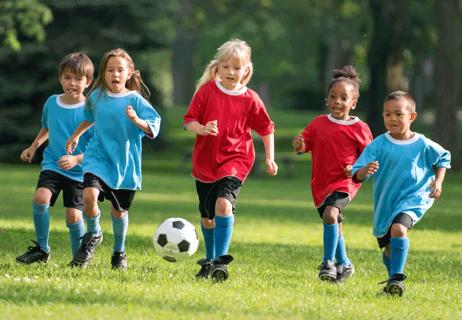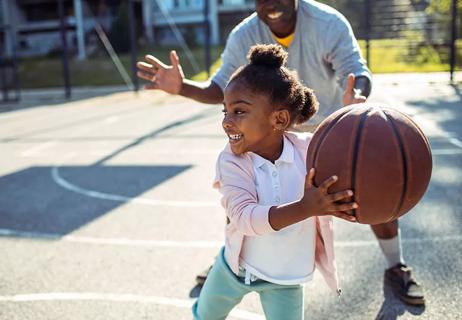Let your little one’s enthusiasm and motivation fuel their interest in running, but don’t pile on miles too early

Your kid never stops moving. They run through the house. (Watch the table!) They run around the yard. (Don’t trample the flowers!) They run down grocery store aisles. (Look out for people!)
Advertisement
Cleveland Clinic is a non-profit academic medical center. Advertising on our site helps support our mission. We do not endorse non-Cleveland Clinic products or services. Policy
So, with all that go-go-go energy, when is your child ready to go run a race? Sports physical therapist Gary Calabrese, PT, DPT, has the directions to the starting line.
Let’s start with the basics: Physical activity is fabulous for kids — and running is a natural human action. In many ways, we were born to run. One researcher even called running “an expression of our evolution.”
But there’s no clear-cut rule when it comes to the right age to begin a focused running program. So, if your child asks to start regularly running at any point … well, just go with it, says Dr. Calabrese.
“Nobody agrees on exactly how much running should be done when kids are young,” he adds. “But one thing we do all agree on is that activity is important.”
Younger children should target shorter distances for training runs and any races that they want to enter, says Dr. Calabrese. Distances can gradually increase as their bodies mature and strengthen.
Every individual is different, of course, but consider these general guidelines for setting up a plan for young runners.
One to two days of running a week is ideal for this age group. That’s a training schedule that allows growing bodies adequate time to recover, notes Dr. Calabrese. Keep distances shorter, too. Think “run around the block” rather than “run around the town.”
Advertisement
This isn’t the time to pull out a stopwatch either. Children at this age should focus on moving at a comfortable pace without worrying about hitting a certain time.
For races, look for “fun runs” between 1 and 2 miles or even a 100-yard dash.
As kids hit their tween-age years, developmental changes in their bodies allow them to better handle more runs and longer distances, says Dr. Calabrese. Training can expand to three to four days a week if their fitness allows.
This is a good age to try a 5K (3.1 mile) race if your child wants to enter a race.
Younger teens can safely bump up their training and run on an almost daily basis. This may be the age when your young runner joins a school cross-country or track team with a more structured training program.
Take caution, though: Overuse injuries can become a concern as children up their training, warns Dr. Calabrese. Rest and recovery days are essential to avoid issues like plantar fasciitis or runner’s knee.
For racing at this age, consider a 10K (6.2 miles) or half marathon (13.1 miles) within reach.
Weekly mileage can continue to grow as children get closer to adulthood. Again, it’s important to allow for rest and recovery to avoid overuse injuries.
With proper training, running a marathon (26.2 miles) may be possible at this age. But many marathons have a minimum age requirement of 18 or may require parental consent for entry. Check individual races for their rules.
Your child wanting to run is the key first step in starting what could become a lifelong fitness activity, says Dr. Calabrese. Here are a few other things to keep in mind as they get going:
Advertisement
Remember, too, that kids aren’t adults — so don’t expect them to follow an adult 5K training plan or workout schedule, stresses Dr. Calabrese. Pushing them too hard can result in injuries or even affect their growth.
If your child has their heart set on running, consider it an opportunity to spend time together ― and a chance for you to get physical activity, too.
“I recommend that parents ride their bikes along while the child jogs,” says Dr. Calabrese. “Or take the child to a track or big, open park so you can watch them. Or better yet, walk or jog with them.”
Consider running a way to strengthen bonds with your child and achieve goals together.
If you run, the idea of your child running with you probably sounds fabulous. But keep in mind that they may not be able to do your routine ― particularly when they’re younger.
“Children aren’t adults, so don’t expect them to keep up with you,” reiterates Dr. Calabrese.
Introducing your child to running can set the foundation for a healthy lifestyle when they become adults. It’s an activity that they can continue for years to build and maintain health and fitness.
“Running is also a good way for children to learn how to set goals and safely push themselves,” says Dr. Calabrese. “And it can help with both short-term and long-term confidence because they can see improvement and achieve goals.”
Advertisement
Learn more about our editorial process.
Advertisement

Swimming is an essential life skill — kids should start learning to swim by age 4

Build breaks into training routines to prevent the wear and tear behind repetitive stress

Make sure their bike is the right size, find a helmet that fits properly and teach them the rules of the road

Participating in sports teaches kids life skills and can build self-confidence for the long haul

Protective equipment like sports cups can help avoid injury

It depends on how sick they were

Each child and condition is unique, but most kids can play with proper precautions

An annual exam looking at heart health

The best parenting style balances enforcing rules and showing plenty of love

Tips include cutting back on sugar, focusing on exercise and managing stress

It can be harder to let go when you’ve invested time, energy and emotions — but it might be the healthier choice long term